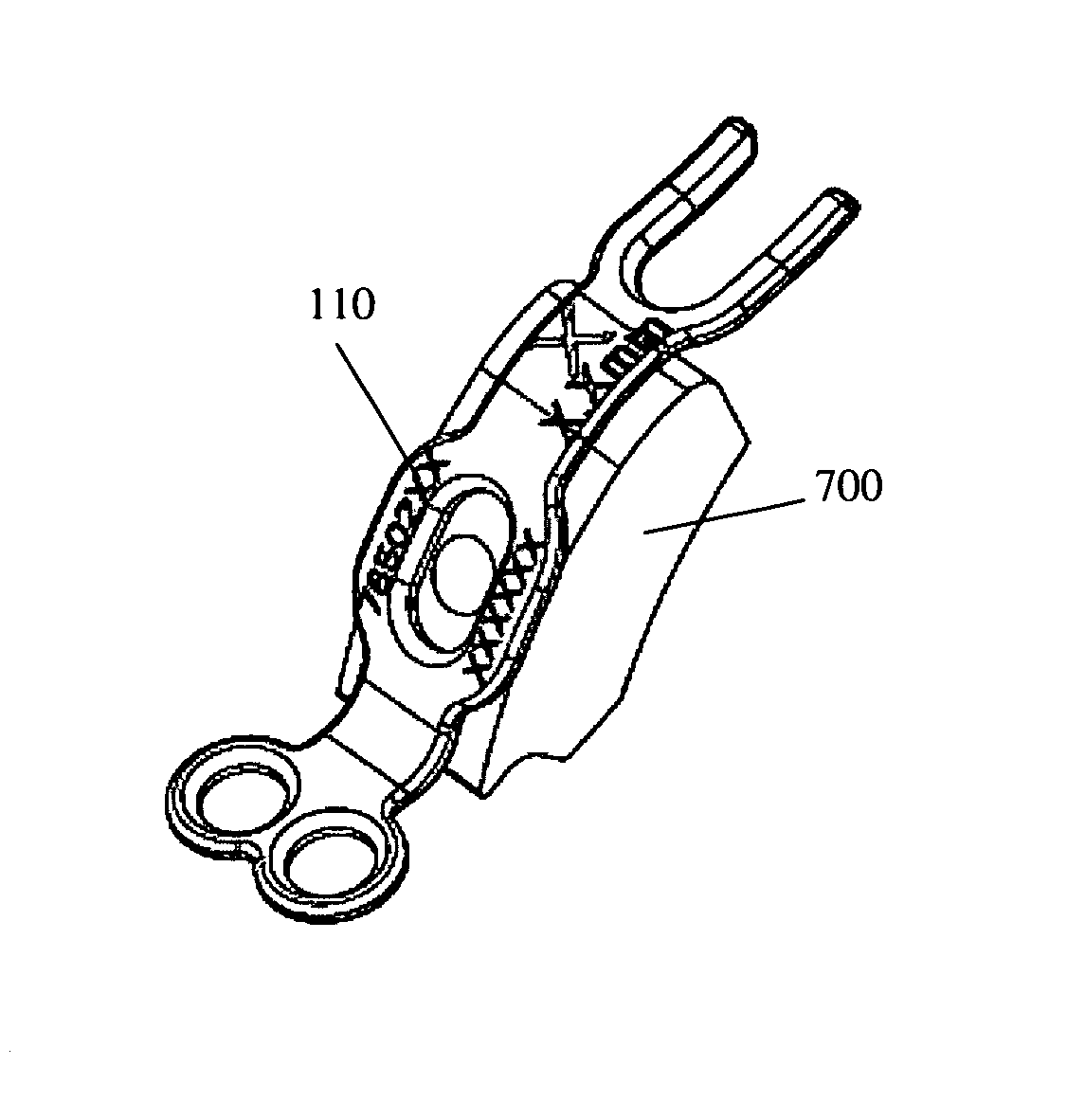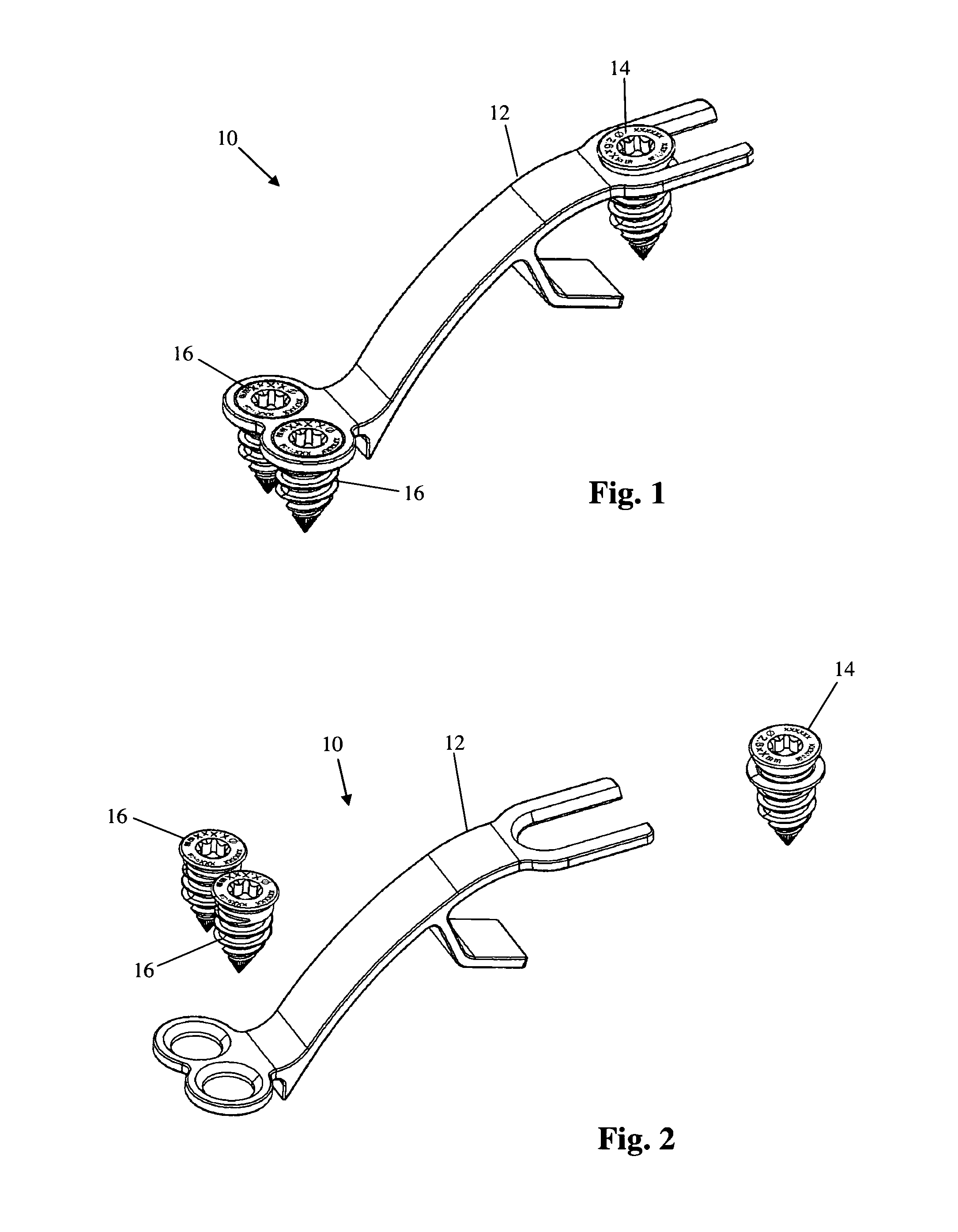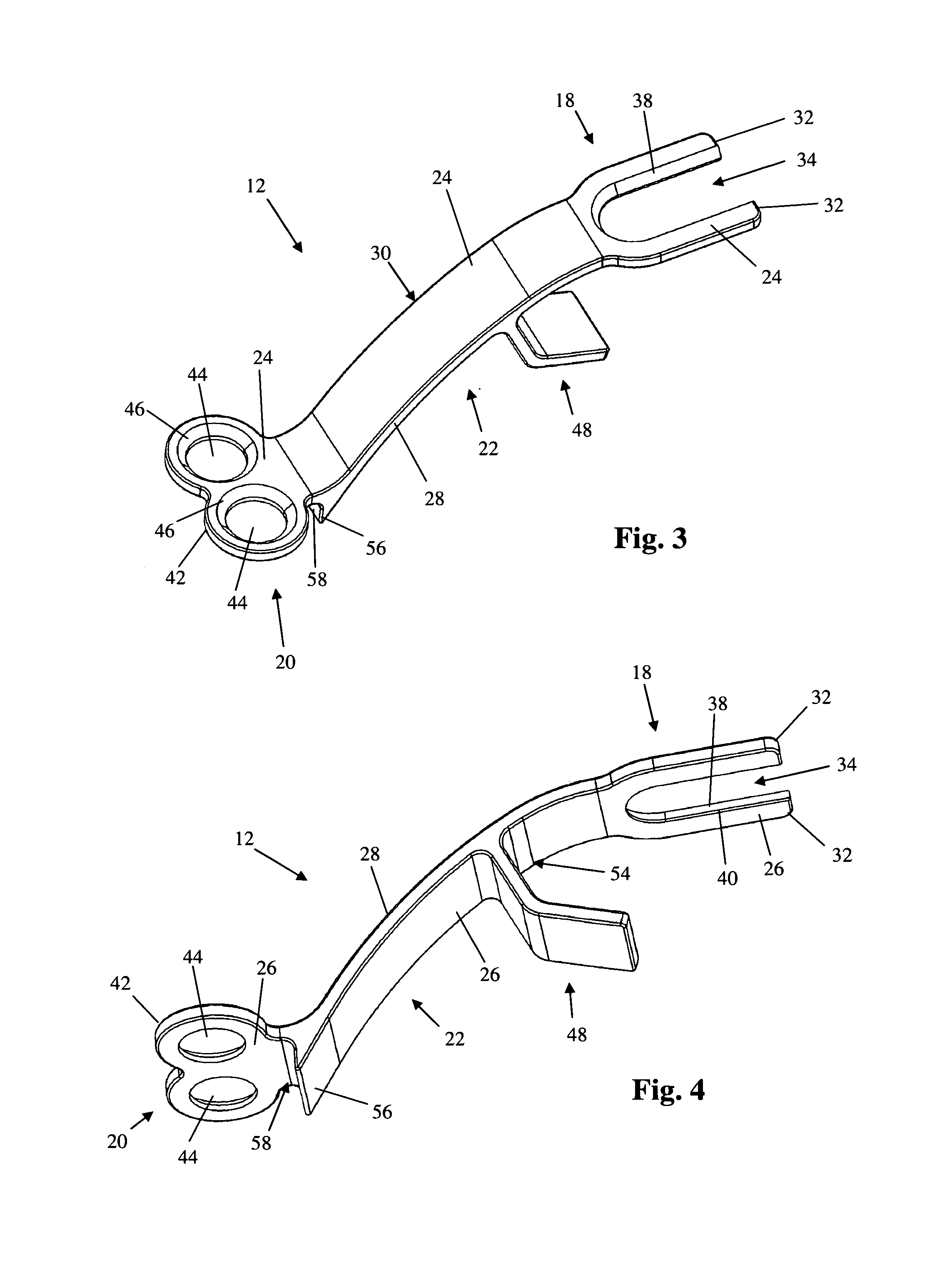Bone plate system and related methods
a technology of bone plate and bone plate, applied in the field of laminoplasty, can solve the problems of surgeons likely drilling, traditional procedures can be largely risky to perform, etc., and achieve the effects of adequate vertical and/or horizontal displacement, adequate visualization of the operative site, and increased visibility of the surgical si
- Summary
- Abstract
- Description
- Claims
- Application Information
AI Technical Summary
Benefits of technology
Problems solved by technology
Method used
Image
Examples
first embodiment
[0051]FIGS. 1-2 illustrate an example of a bone plate system 10 configured for use in a laminoplasty procedure, according to the present invention. By way of example only, the bone plate system 10 includes a bone plate 12, a first fixation element 14, and at least one second fixation element 16. The bone plate 12 is elongated and has a generally curved shape such that the plate 12 has an associated radius of curvature. The plate is sized and dimensioned to span a gap between a pair of bony segments, for example a pair of bony segments constituting a divided lamina. The first and second fixation elements 14, 16 are each configured to securely attach the bone plate 12 to the bony segments. Although shown by way of example in FIGS. 1 and 2 as being bone screws, other fixation elements are possible without departing from the scope of the present invention, for example tacks, nails, hooks, pins, sutures, adhesives, and the like.
[0052]The bone plate 12, first fixation element 14, and seco...
second embodiment
[0064]Referring to FIG. 17, an example of a bone plate system 110 is provided according to the present invention. The bone plate system 110 is similar to the bone plate system 10 described above except that the bone plate system 110 is configured to be used with a bone graft, for example the bone graft 700 shown in FIG. 32. By way of example only, the bone plate system 110 includes a bone plate 112, a first fixation element 114, at least one second fixation element 116, and a third fixation element 117. The bone plate 112 is elongated and has a generally curved shape such that the plate 112 has an associated radius of curvature. The plate 112 is sized and dimensioned to span a gap between a pair of bony segments, for example a pair of bony segments constituting a divided lamina. The first and second fixation elements 114, 116 are each configured to securely attach the bone plate 112 to the bony segments. The third fixation element 117 is configured to securely attach a bone graft, f...
third embodiment
[0068]FIG. 21 illustrates a bone plate system 210 according to the present invention. The bone plate system 210 is identical to the bone plate system 10 except that it is provided with a smaller size. Many different sizes of the bone plate system 10 / 210 may be provided without departing from the scope of the present invention.
PUM
 Login to View More
Login to View More Abstract
Description
Claims
Application Information
 Login to View More
Login to View More - R&D
- Intellectual Property
- Life Sciences
- Materials
- Tech Scout
- Unparalleled Data Quality
- Higher Quality Content
- 60% Fewer Hallucinations
Browse by: Latest US Patents, China's latest patents, Technical Efficacy Thesaurus, Application Domain, Technology Topic, Popular Technical Reports.
© 2025 PatSnap. All rights reserved.Legal|Privacy policy|Modern Slavery Act Transparency Statement|Sitemap|About US| Contact US: help@patsnap.com



